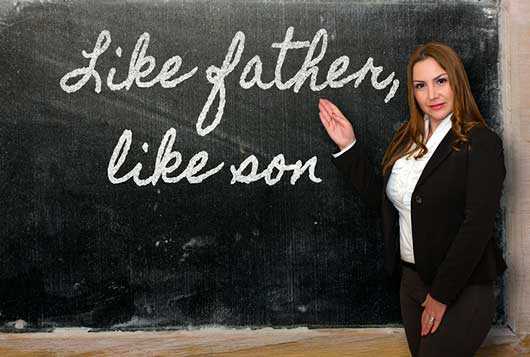
Curly-headed, with big, expressive brown eyes, Amelia was a late-in-life baby, an only child who, in the opinion of her adoring parents, was destined for greatness. When she began Pre-K, my husband and I had big dreams that her little school would be the first in a long line of academic successes for our shining star, who would eventually ascend to an Ivy League university on a full-ride scholarship, of course.
As we wrapped up Pre-K, a few weeks from the start of Kindergarten (or so we assumed), Amelia’s teacher told us she suspected that our 4-year-old had an auditory processing problem. That revelation resulted in a drawn-out series of diagnostic tests. Almost two years later, Amelia (now 6), was set to begin Kindergarten at a prestigious K through 12 college preparatory, just blocks from our Dallas home. The afternoon before classes began, we received the diagnosis: Dyslexia.
On top of the pricey tuition we’d already committed to, we opted to hire a tutor who specialized in teaching dyslexic children. All was going well, until late October of First Grade, when the school curriculum intensified. This included dreaded timed math tests (one hundred addition and subtraction problems in six minutes) and a half-hour of homework assigned nightly. But 30 minutes for other students took an hour, or more, for our child. On top of the nightly homework, Amelia was required to finish all incomplete classroom work at home. There was usually math, spelling, grammar and social studies. She could do all of the work, it just took her two or three times longer than students without dyslexia.
Evenings became akin to running on a treadmill. My husband and I would begin helping her with homework the minute we got home from work until her bedtime, often as late as 10 p.m. With only a short dinner break, there was no time for play. It was an all-consuming experience that made for a sleep-deprived, irritable little girl and a grumpy, frustrated set of parents. Our tempers were short, our patience was shot, and our poor girl’s tears flowed regularly. At the rate we were going, we feared that our daughter was on track to become a dropout, possibly as early as junior high. And from a prep school, no less.
Read Related: Does My Child Have a Learning Disability?
Desperate, I turned to Amelia’s tutor for advice. She recommended another private school in Dallas where she once taught. It was a small, non-profit, Christian school dedicated to teaching children with learning differences. As the semester drew to an end, I visited The Hillier School, liked what I saw, and arranged an all-day visit for Amelia.
We had never specifically told Amelia that she had a learning difference, much less what it was, and I wasn’t ready to tell her that in all likelihood she would end up transferring to this new school. I simply explained that this was a special “field trip” that only she got to take, and that the next day we’d return to her regular school.
The principal at Hillier wisely assigned a charming third-grade girl to host Amelia. When I picked her up at the end of the school day, Amelia was excited about her new “big girl” friend, the engaging teachers, and the lack of homework. All doubt was gone. This was the better school for her. Still, there was the matter—and not a small one—of telling my daughter that she was moving to the new school in just days.
By that weekend, I remained uncertain how best to break the news. My husband was out of town, so I was on my own. As Amelia and I drove around town running errands, I spotted a McDonald’s.
“Amelia, would you like to get a Happy Meal?” I asked.
“What kind of toy are they giving away?” she replied.
I don’t remember what the toy was, but I do remember that I hoped it was a really good one. As Amelia munched on chicken nuggets, I fortified myself with a big sip of icy cold Coke. “Here goes nothing,” I told myself.
“So what did you think about your visit to The Hillier School?”
“It was okay. I like my school better, though,” Amelia replied.
“So, you’re all right with all the homework you get every night?”
“No, I hate homework,” she mumbled as she sipped her chocolate milk.
“What about those timed math tests? Are you okay with those?”
“No, I hate them!“
“What would you think if you didn’t have to do timed math tests anymore or do homework all night? How would that be?”
“I think I’d really like that.” Amelia was busy trying to tear the plastic wrap off her Happy Meal toy.
“Amelia, at Hillier they don’t give homework in First Grade and they never, ever do timed math tests. They teach to your strengths, not to your weaknesses. Do you know what I mean, baby?”
“Do you mean you want me to start going to Hillier all the time?” This time Amelia made direct eye contact.
“Well, yes, I do, but what I was trying to say was, do you know what I mean about teaching to your strengths?”
“No, I really don’t know what that means, but I don’t want to go. I like my school, and I like my friends.”
“I know you do, honey, but your school isn’t teaching you the way you learn best. If they were, you wouldn’t be coming home with so much leftover work from class every day. And math wouldn’t be such a hassle. At this new school, they’ll help you learn how to add and subtract without having to worry about how long it takes. At the end of the day, once you go home, you can play and relax. Won’t that be better than staying up late doing homework, and going to bed tired and cranky?”
Amelia hesitated. She looked down at her toy, and then she looked up, ready to strike a deal.
“Yes, that would be better, but if I go and I don’t like it, can I go back to my own school?”
I didn’t want to lie, but then again, I figured it wasn’t a lie if I was sure the new school was going to be a perfect fit. “Yes,” I proclaimed. “Yes, if you don’t like it, you can go back. But you have to give it at least three months,” I said.
“Okay, mommy.” At that moment, Amelia’s bright, soulful eyes, so full of trust and love, enveloped me.
“Mommy, why is it that my school doesn’t teach the right way?” Amelia asked.
“Well, for some students, it is the right way. But not all students learn the same way. And as it turns out, you learn differently. Hillier teaches students the way you learn. Like I said before, they teach to your strengths, not your weaknesses.”
Eventually, in the not-too-distant future, I would share with Amelia the name of her learning difference, but I made a conscious decision not to put a name or a big emphasis on the difference at that point. I felt it wasn’t critical information. Besides, she had an issue that was more important to her just then.
“Why didn’t you tell me when we visited Hillier that it was going to be my new school? Did you already know?”
She may have been dyslexic, but then, as now, my girl had an uncanny ability to get right to the heart of the matter.
“Yes, Amelia. I knew that your dad and I wanted you to go to Hillier, but we also wanted to make sure you liked it. We figured if it didn’t feel like a good fit, we might not change schools, so I wasn’t positive. We were hoping you’d like it enough to give it a shot, though. Does that make sense?”
“Yes,” she frowned as she turned her eyes back down to her Happy Meal toy. “But don’t do that anymore. Just tell me, okay, Mommy.”
“Okay, Amelia. Okay.”
Three days later, on Amelia’s last day at the preparatory school, I took cupcakes. When I delivered them, Amelia’s soon-to-be-former teacher asked me to tell the students the news in whatever way I felt was best. The best way, I thought to myself, was for the teacher to tell the students. It had been hard enough explaining the move to my own child, much less to other children.
“Class, Amelia’s mother would like to say a few words to you,” the teacher said.
“Boys and girls, I brought cupcakes because it’s a special day for Amelia. Tomorrow she’s going to a new school. We wanted to . . . .”
A lump began forming in my throat. If I said one more word, I knew I would dissolve into a puddle of tears, something I was unwilling to have Amelia see or associate with this occasion. I smiled at the students and slowly sank into a nearby chair.
At that very moment, my 7-year-old stood up, a confident smile on her face. Her voice boomed, as if public speaking was second nature for her.
“Tomorrow I’m going to start going to The Hillier School,” she said. “They don’t give homework, and they don’t give timed math tests!”
“Wow,” came the sound of approval.
“And I already made a new friend, a third-grader named Maddie,” Amelia added proudly. “We brought cupcakes for everybody to celebrate.”
The students broke into applause. It was as simple as that.
I was so proud of Amelia, so relieved at her ability to embrace the situation. Even so, the minute I left the classroom, tears began to flow. I felt I was letting go of a dream I’d had for my daughter since before she was born. I was scared about whether her father and I were making the right decision and about what the future might hold for her. Then, in the middle of my sobs, I remembered Amelia’s question to me at McDonald’s: “Mommy, why is it that my school doesn’t teach the right way?”
Amelia might not know the word “dyslexia” yet, but she understood something wasn’t working for her. Maybe shewould never attend an Ivy League school. Maybe she would. Others with dyslexia have. I couldn’t predict the future, but I could see that Amelia would attain “greatness” on her own terms, achieving her own goals by making the most of her own strengths. She got it. Mommy got it, too.











